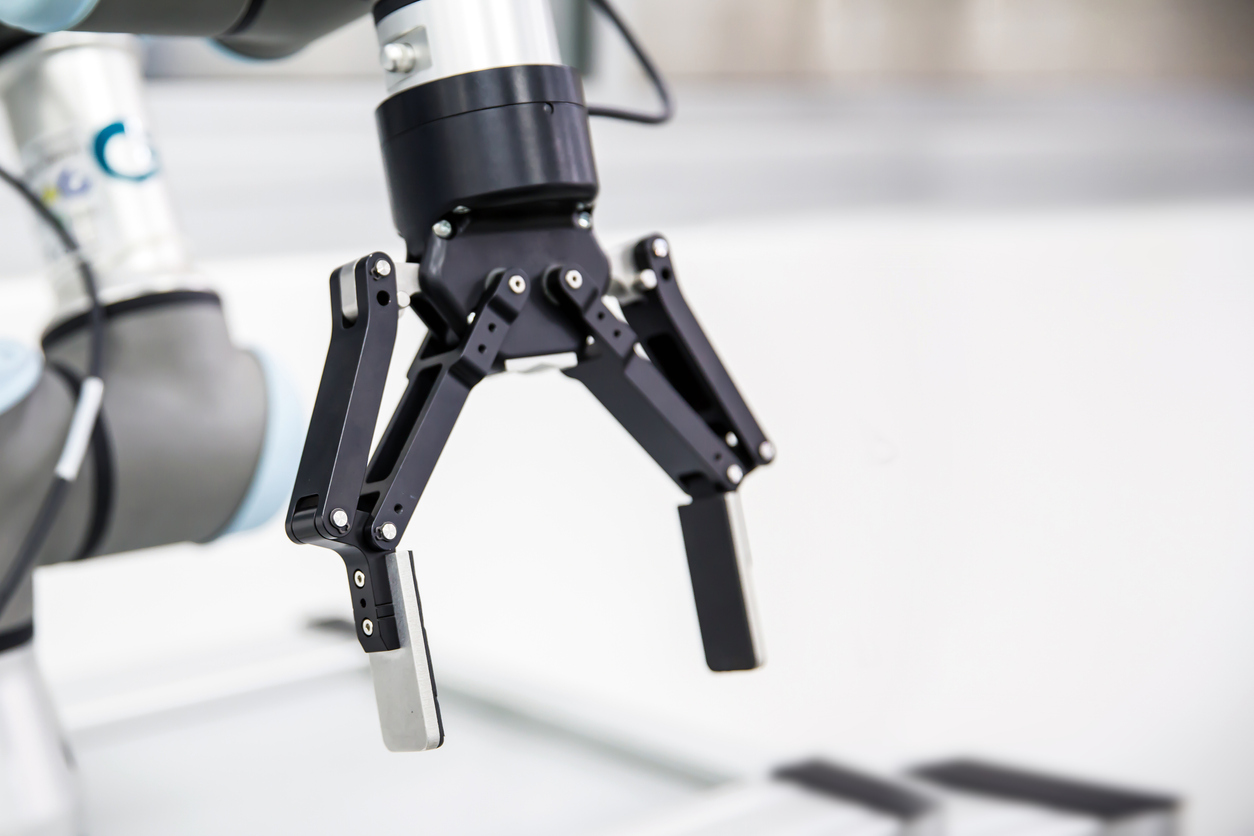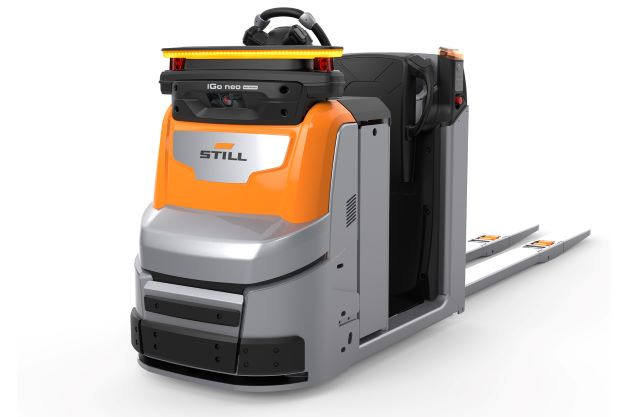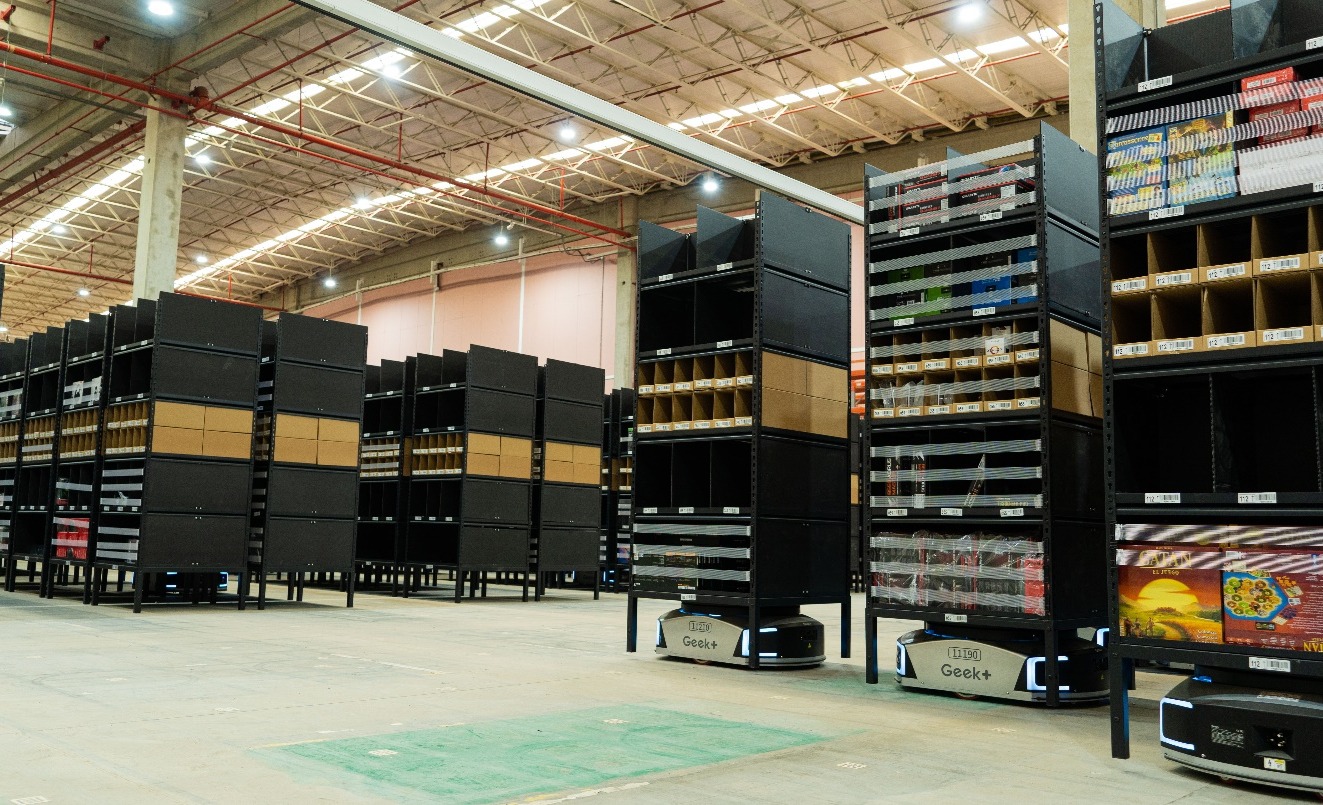STILL GmbH, the Hamburg-based provider of intralogistics solutions, was the first manufacturer to launch iGo neo in 2016, a technology that turns series-produced intralogistics trucks into independent assistants for their operators. The technology enables perfect interaction between man and machine. Now STILL is launching a series of further innovations for the OPX iGo neo horizontal order picker that result in even more autonomy and therefore additional safety and cost-effectiveness in the warehouse.
The OPX iGo neo horizontal order picker is a vehicle that autonomously follows the operator at every step during order picking. It reacts to its operator and the environment. It therefore provides ergonomic order picking that is unique in the market. The innovative technology ensures that the order picker is always ideally positioned in relation to the operator and that the operator does not have to walk unnecessarily, which in itself leads to increased efficiency.
Safety is also high on STILL’s agenda, especially for autonomous vehicles. The OPX iGo neo, for instance, has a unique safety concept. The horizontal order picker recognises and reacts situationally not only to people but also to dynamic and static objects. It independently detects and avoids non-critical obstacles and stops gently in front of critical barriers.
Collision avoidance in manual operation
Since November this year, the STILL Easy Protect collision protection system has been providing additional safety, even in manual operation. The assistance system is available for all OPX iGo neo models: “If the operator is on a collision course during manual operation, the truck detects this and brakes automatically depending on the distance of the obstacle,” explained Thede Baumann, Product Manager for the iGo neo.
When developing this assistance system, one of the key objectives was to keep the restrictions on driving as low as possible. “To achieve this,” said Volker Viereck, Head of intelligent autonomous software development at KION mobile automation, “the driving manoeuvre requested by the operator is constantly assessed and intervention only takes place if the operator is explicitly on a collision course”. This means that the closer the vehicle gets to an obstacle, the more the specified speed is reduced to avoid a collision.
“However, if the operator reacts to the obstacle by adjusting the steering angle, thus avoiding it,” continued the robotics development manager, “the vehicle automatically accelerates again to the driving speed desired by the operator.”
In addition, Easy Protect evaluates the distance at which the operator wants to pass an obstacle. This leads to a possible speed reduction of the vehicle depending on this distance.
“Easy Protect is comparable to the lane departure warning system in cars,” said Baumann. The great difference to the automotive industry, however, is that the operator is supported very discreetly by the assistance system. In a nutshell, the corrections made by the vehicle are minimal and very gentle, but nevertheless accurate to the centimetre.
The level of intervention of STILL’s new assistance system, which can also be retrofitted to trucks already on the market, can be selected by the operator and adjusted if necessary. Three modes are available for this: early intervention, standard intervention and late intervention.
“With this assistance system, the iGo neo was especially able to play to its strengths,” Viereck continued, “because the sensor technology for this was already available in the vehicle.” The new feature does not require any hardware upgrades and can be made available to all existing customers via a vehicle software update. This underlines STILL’s strategy of allowing the OPX iGo neo to benefit from new optimisations or even new features even after it has been delivered. If desired, the robotic vehicle can be kept permanently up-to-date.
3D collision protection
The 3D collision protection, which will be added to STILL’s OPX iGo neo from next year, uses a 3D camera to reliably detect obstacles in front of the truck – both in manual and autonomous operation. “The camera is positioned above the pedestrian protection system,” explained Viereck. “This means that its field of vision covers the entire height of the front of the vehicle, which was also an explicit request from our customers.”
In addition to increased safety, the 3D collision protection also leads to higher working efficiency, for example when using several scissor lift trucks. Until now, larger safety distances were necessary in practice because the raised forks of the vehicle in front cannot be detected by sensors.
“Since this restriction is resolved by Easy Protect 3D, vehicles can close in more closely,” said Baumann. This in turn reduces walking distances and increases productivity. This assistance system by STILL, which is unique on the market so far, can also be retrofitted for existing order pickers.
New industrial pallet version
As of now, a new vehicle version of STILL’s OPX iGo neo horizontal order picker is also available. The industrial pallet version enables the transport of load carriers up to a width of 1,000mm in autonomous assistance mode. Previously, this was only possible for a pallet width of 800mm.
This option increases the range of applications for the OPX iGo neo even more. It expands perspectives not only for industrial pallets but also for special load carriers with a width of up to 1,000mm. The integrated pedestrian protection system safeguards the enlarged vehicle and load width accordingly. In addition, the intelligent vehicle knows its own dimensions and operates accordingly. An adaptation of the desired distances is not necessary, this is done by the neo itself. The new industrial pallet version from STILL is available for all models.
“Since each country has different requirements for the use of autonomous vehicles, a number of system enhancements have been made,” explained Viereck. Due to this system expansion to adapt to the legal requirements of the different regions, the OPX iGo neo can now be offered throughout EMEA (Europe, Middle East and Africa) as well as in other regions, such as the USA, Australia or New Zealand. The success of the STILL horizontal order picker is therefore not limited to core Europe – the truck is now in demand worldwide.











